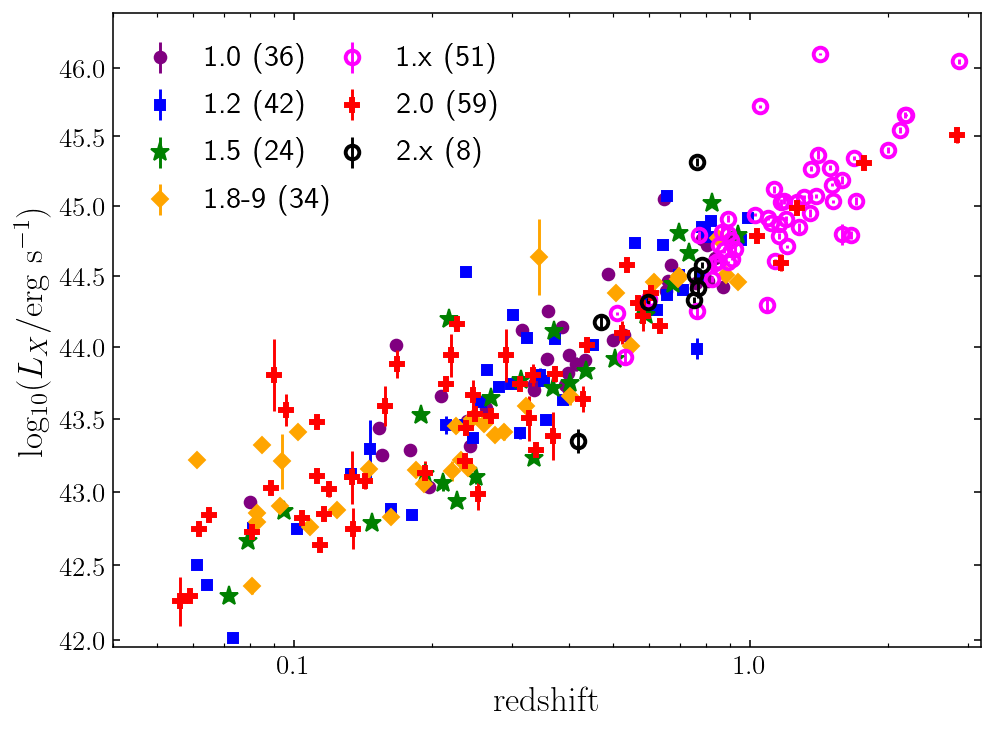The “Bright Ultra-hard XMM-Newton Survey” (BUXS; PI: S. Mateos) aims at mapping the obscured accretion phenomenon in luminous Active Galactic Nuclei (AGN) up to the cosmic epoch of the peak of Super Massive Black Hole (SMBH) growth and star formation activity. BUXS is the result of an intensive collaboration that has brought together leading experts around the world working on different aspects of AGN physics.
The survey includes 258 X-ray bright AGN (flux at 4.5 to 10 keV energies > 6×10−14 erg s−1cm−2) detected over 44.43 deg2 of the northern sky with the European Photon Imaging Camera (EPIC) pn onboard the XMM-Newton observatory. The AGN were selected at the highest energies at which the XMM-Newton X-ray detectors are sensitive, 4.5-10 keV. The selection of sources at these energies was motivated by the need to reduce the strong bias against heavily absorbed AGN affecting surveys conducted at lower energies. The AGN in BUXS span redshifts from 0.05 to ~2 and intrinsic (absorption-corrected) 2-10 keV X-ray luminosities between 1042 and 1046 erg s−1.
BUXS is one of the largest complete samples of AGN at such hard X-ray energies (>4.5 keV) sampling the fluxes where most of the Universe’s accretion power originates. BUXS will increase the number of uniformly selected highly luminous distant AGN identified at such energies by more than a factor of 4.

The BUXS activities have been funded by the following national projects:
- RTI2018-096686B-C21 (MCIU/AEI/FEDER/UE), cofunded by FEDER funds and the Agencia Estatal de Investigación.
- AYA2016-76730-P (MINECO/FEDER) cofunded by FEDER funds and the Agencia Estatal de Investigación.
- AYA2015-64346-C2-1-P (MINECO/FEDER) cofunded by FEDER funds and the Agencia Estatal de Investigación.
- Spanish Ministry of Science and Innovation through the grant AYA2010-21490-C02-01 (MINECO/FEDER) cofunded by FEDER funds.
